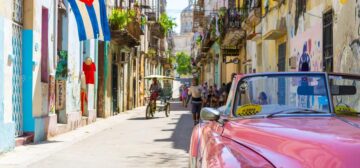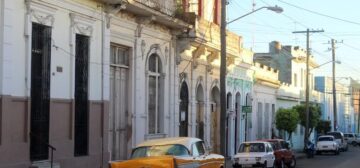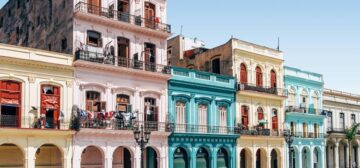Perhaps one of the most important parts of planning a trip to Cuba involves figuring out exactly how you’ll get around once you’re there.Cubana (tel: (07) 834 4446; www.cubana.cu) and AeroCaribbean (www.fly-aerocaribbean.com) are the principal carriers, operating flights between Havana and Santiago de Cuba, Holguín and Cayo Coco.Renting a vehicle in Cuba is relatively easy and common among tourists. If you choose to go this route, however, there are plenty of things to keep in mind first if you want to remain in one piece on the road.All car hire companies are state-owned. Prices are negotiable up to a point, but expect to be delayed when picking up the vehicle. It may be easier and has proven to be cheaper to book car hire through a specialist tour operator in your own country.When picking up the car, be sure there is a spare tire and jack, and consider snapping a date-stamped picture of any existing damage to avoid disputes upon drop-off. A valid national driving licence will be required.By most accounts, driving in Cuba can be rough. This is due in part to the poor conditions on many secondary roads, which can be narrow, winding and riddled with potholes. Add to this the lack of adequate street signage and you’ve got a confusing and potentially dangerous situation.Driving at night can be particularly risky since many roads are poorly lit (or not lit at all). Additionally, it’s not uncommon to come around a bend and find pedestrians, cyclists or even livestock in the road, so drivers should exercise caution.Another thing to look out for is traffic lights, which are often placed to the far corner of intersections. This can be hazardous because if you’re not expecting to come upon one, you may find yourself stopped dangerously in the middle of the crossing.Knowing the dangers of actually getting behind the wheel in Cuba, it’s not surprising that many tourists choose to use taxis to get around instead. There are certainly plenty available for hire, but should you choose this particular mode of transportation, take into account the following so that you do so safely. First and foremost, avoid taking rides with unlicensed taxis. They are often driven by thieves who are out to pick up and rob passengers. Be particularly careful of fare amount when hiring a taxi, especially in Havana.If possible, ask someone who is native or at least familiar with the system how much the fare should be prior to heading to your destination. This way you will know beforehand how much the driver should be charging you and can avoid be scammed out of an exorbitant fee by a dishonest driver.If you can’t confer with a local, insist that the meter be used to remove any doubt.One of the more unique types of transportation in Cuba is the “Co-Co” taxi, a three-wheeled vehicle that is generally yellow in color and contains a flimsy hood. These are basically just glorified motorcycles that have been modified to carry passengers.Because they can reach speeds of up to 40 mph and lack any sort of safety features, including seatbelts, “Co-Co” taxis can be pretty dangerous.They are, nevertheless quite popular with tourists so if you choose to ride on one, be aware of the risk.The lack of traffic makes Cuba a popular choice for cycling tours. Bicycles can be rented in Havana from a number of bike hire companies.There are a number of options when it comes to bus travel within Cuba. Many are specifically designated for tourists and travel conveniently within and between cities.This mode of transportation is pretty reliable and clean, although some of the more heavily used buses are beginning to show their wear.One thing to keep in mind when selecting bus as a mode of transportation is that they can be quite crowded and therefore can be haven for pickpockets. Keep your valuables well concealed and bags zipped and stored in front of you, just in case.Travel by train is not the most reliable form of transportation in Cuba, mainly due to the lack of quality equipment. Still, there are a few dependable train lines that run between Havana and Santiago de Cuba.There are also additional lines throughout the country with stops at Camagüey, Santa Clara, and the cities of Manzanillo, Cienfuegos, Sancti Spiritus, Pinar del Rio and Morón. Keep in mind that while a few trains offer first class options, none of them provide sleeper cars.Additionally, food and drink are not typically served so plan accordingly. With the poor equipment quality of many of the trains, you may find yourself stuck for hours awaiting the car’s repair. And while aboard, be sure to keep a close eye your belongings. Luggage is frequently stolen from train cars in Cuba.The only destinations in Cuba serviced by water routes are Isla de la Juventud on a daily ferry from Batabanó south of Havana, and Cayo Levisa, as part of accommodation packages to that key off the northern coast. Additionally, there is a commuter ferry crossing Havana harbour several times daily between Havana and Casablanca.









